Single Flush vs. Dual Flush Toilets – Which One Is Right For Me?
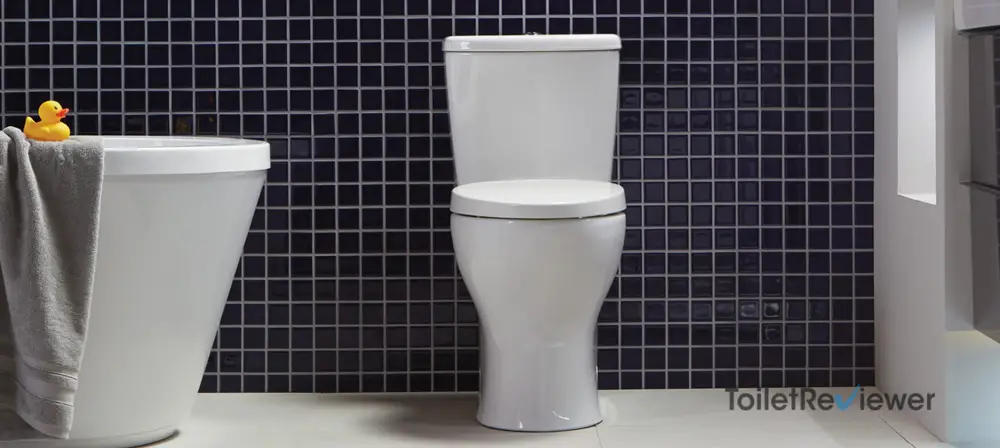
Do you set out to buy a new toilet? Would you like to find out more about different flushing systems before making up your mind? If so, you’re in the right place!
Whether you need it for your workplace or home, it is of crucial importance to choose the right toilet. Generally speaking, there will be two options to choose from: single flush and dual flush toilets. To make the right choice, you should know the main differences between these toilets.
Just because a toilet is suitable for home use doesn’t mean it is also perfect for public use. That said, you should consider where the toilet will be installed before reaching for your wallet.
Single flush toilets can be found in most buildings and older houses. Most toilets on the market come with a single flush system. It delivers the same amount of water per flush regardless of the type of waste.
Dual flush toilets, on the other hand, offer two separate flushing options. A full flush is intended for solid waste, while a half flush is aimed at disposing of liquid waste. The idea behind this interactive design is to help save water.
Here, you can get a better understanding of the key features of dual flush and single flush toilets. We will also point to their advantages and shortcomings to help you make the right decision.
Are you in a rush? If you have no time to minutely go over all the facts and features (it’s worth reading!), then take a quick glance at the comparison chart below.
| Flushing Choice | ||
| Technology | ||
| Suitable For | ||
| Water-Saving/Eco-Friendly | ||
| Easy To Operate | ||
| Maintenance Cost | ||
| Replacement Cost | ||
Toilet Cost | ||
| Parts Availability | ||
| Modification |
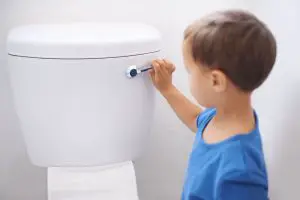 To help you get a better idea of the major differences between the single flush and dual flush toilets, we will walk you through their key features.
To help you get a better idea of the major differences between the single flush and dual flush toilets, we will walk you through their key features.
These include the flushing system, water usage, maintenance, ease of cleaning, aesthetics, and cost.
We’re going to compare these two types of toilets in different aspects and share tips every step of the way. Without further ado, let’s dig into it.
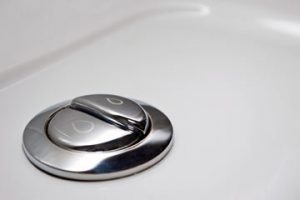 Although a dual flush toilet is geared towards saving water, you may experience difficulties when pressing the built-in flush button. Sometimes it is necessary to do it with more force.
Although a dual flush toilet is geared towards saving water, you may experience difficulties when pressing the built-in flush button. Sometimes it is necessary to do it with more force.
This could be a small challenge for elderly persons and people with a disability, especially for those suffering from hand or wrist arthritis.
Single flush toilets don’t pose such a challenge, as they have the trip lever instead of the button. So, they are more advantageous regarding ease of flushing. However, this doesn’t mean the single flush toilets have a better flushing system.
 Gone are the days when the single flush models used more than 3 gallons of water per flush. These toilets have come a long way in recent years and undergone lots of improvement.
Gone are the days when the single flush models used more than 3 gallons of water per flush. These toilets have come a long way in recent years and undergone lots of improvement.
Today, a typical single flush toilet uses 1.6 GPF. Some high-efficient models consume only 1.28 gallons per flush or less. They can help homeowners reduce their water footprint, i.e. the volume of water consumed.
Nevertheless, single flush toilets are lagging in terms of water efficiency compared to their dual flush counterparts. The secret of their success lies in the double flush mechanism. It allows you to save water at home by giving you the option to use fewer gallons for liquid waste.
When it comes to single flush toilets, the water consumption is constant – it’s either 1.6 or 1.28 gallons per flush. Dual flush toilets include two flush modes:
Normally, dual flush toilets have a tank with two buttons. You can use them alternately, depending on the type of waste.
So, as far as water usage is concerned, dual flash models win the battle. With such a toilet installed in your bathroom, you can save more than 10,000 gallons of water annually. This is an effective way to cut your water bills.
Are you looking to reduce flush volumes without replacing your existing toilet? Here are two simple tricks to increase the water efficiency of your old toilet.
You can also check the video below to learn how to convert a single flush toilet to a dual flush. It will do wonders for your water bill!
Let’s face it, neither type of toilet is easy to clean. The ease of cleaning depends on how the toilet tank, bowl, and rim are designed. The flushing power and the material a toilet is made of also play an important role.
However, dual-flush toilets are a bit harder and costlier to maintain. That’s because their parts are difficult to get. It’s much easier to find the spare parts of single flush toilets given that they are readily available on the market thanks to their popularity.
Whether you’re looking for the flush valve, lever, or other replacement parts, you’ll find them easily at most local stores. If you have a dual flush toilet, you may have a tough time finding some replacement parts.
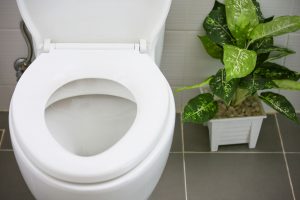 If you’re seeking eco-friendly options, then look for dual flush toilets. They are highly effective in performance despite using less water. This makes them environmentally friendly.
If you’re seeking eco-friendly options, then look for dual flush toilets. They are highly effective in performance despite using less water. This makes them environmentally friendly.
A dual flush toilet can do a good job of eliminating waste without wasting water. So, if you intend to save water at home, consider installing this kind of toilet in your bathroom. It allows you to save a lot of water per year.
Extra tip: In some states, it’s possible to get rebates on high-efficiency toilets. Try to find out if these rebates are available at your state. If so, replace your toilet with an eco-friendly efficient option and take advantage of rebates.
It is tricky to say which type of toilet is more beautiful – it’s a matter of personal taste. Yet, the single flush toilets offer the advantage of modification.
They can be modified to match almost any bathroom decor and environment. For example, the lever can be modified in such a way to fit in with a certain bathroom. That’s not available when it comes to the dual flush models since they have difficult-to-change buttons on the tank.
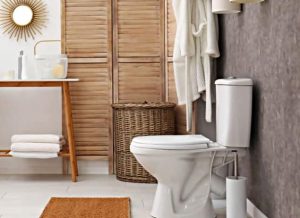 Last but not least, you should consider the cost when choosing between the single flush and dual flush toilets.
Last but not least, you should consider the cost when choosing between the single flush and dual flush toilets.
Take into account the replacement and maintenance costs besides the toilet price itself.
Generally speaking, the double flush toilets are costlier than the single flush models. They are also more expensive to maintain, as stated earlier. Maintenance is critical for keeping a toilet in good working condition, so be prepared for maintenance expenses too.
However, the dual flush toilets appear to be more economical in the long run. Over time, they pay for themselves by consuming less water.
With a high-efficiency dual flush toilet, you will be saving money on your water bill. Just be sure to choose a high-quality toilet that is built to last a lifetime. You will want a toilet that can serve you well without any problem.
To conclude, both types of flushing systems come with unique disadvantages and advantages. There’s no ideal toilet suited for all customers and all bathrooms.
Take the time to scrutinize their features and opt for one that suits your daily water requirements. Additionally, check the state regulations before installing a toiler. It’s also a good idea to consult an expert plumber for advice on which toilet is more appropriate for your bathroom.
As it turned out, single flush toilets are easier to maintain and they come at lower price points. Dual flush toilets, on the other side, use less water but they are more expensive. Nevertheless, many people find that they are cheaper in the long run.
Saving water is very important in this world. By saving more water, a dual flush toilet will help you spend less on your water bills. That’s why it is worth the extra cost.
Single flush toilets come in useful for high-traffic areas featuring baths with multiple users, such as public restrooms and busy office bathrooms. If you need a toilet for your home or apartment with just a few users, then a dual flush is a better choice.